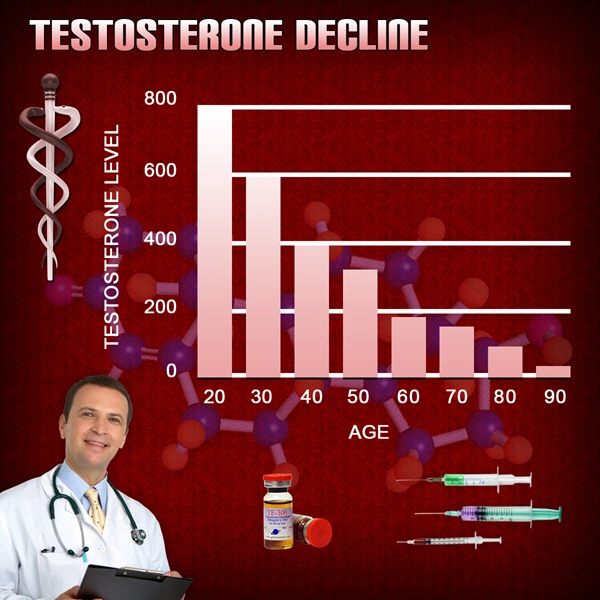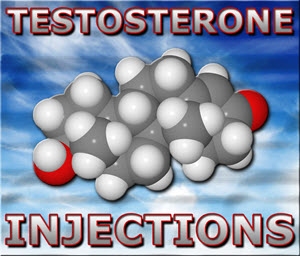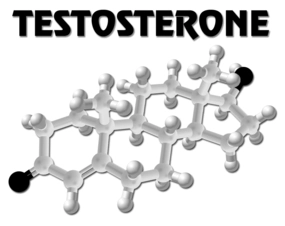Introduction
Diabetes management has evolved significantly over the years, with the introduction of various medications aimed at controlling blood glucose levels. Among these, semaglutide and insulin have emerged as pivotal treatments. This article delves into the dynamics between these two therapies, examining whether they serve as complementary tools or competitive alternatives in the management of diabetes, particularly for American males.
Understanding Semaglutide and Insulin
Semaglutide is a glucagon-like peptide-1 (GLP-1) receptor agonist, primarily used in the treatment of type 2 diabetes. It works by mimicking the incretin hormone, which stimulates insulin secretion and reduces glucagon release, thereby lowering blood glucose levels. Additionally, semaglutide promotes weight loss, a significant advantage for many diabetic patients.
Insulin, on the other hand, is a hormone naturally produced by the pancreas that regulates blood sugar levels. In diabetic patients, insulin therapy is used to replace or supplement the body's natural insulin production. It is available in various forms, including rapid-acting, long-acting, and premixed formulations, allowing for tailored treatment plans.
Complementary Roles in Diabetes Management
For American males with diabetes, the combination of semaglutide and insulin can offer a synergistic approach to managing the disease. Semaglutide's ability to enhance insulin secretion and promote weight loss can complement insulin therapy, particularly in patients who struggle with obesity and insulin resistance. This combination can lead to better glycemic control and potentially reduce the insulin dose required, thereby minimizing the risk of hypoglycemia and weight gain associated with high insulin doses.
Clinical studies have demonstrated that adding semaglutide to insulin therapy can significantly improve HbA1c levels, a key indicator of long-term blood glucose control. This improvement is particularly beneficial for American males, who often face higher rates of diabetes-related complications due to lifestyle factors and genetic predispositions.
Competitive Aspects and Considerations
Despite their potential synergy, semaglutide and insulin can also be viewed as competitive options, especially in the early stages of diabetes management. For patients with mild to moderate hyperglycemia, semaglutide might be preferred due to its additional benefits on weight management and cardiovascular health. In contrast, insulin therapy might be reserved for those with more severe hyperglycemia or those who do not respond adequately to other medications.
The decision between these therapies often hinges on individual patient factors, such as the severity of diabetes, presence of comorbidities, and patient preferences. For American males, who may prioritize convenience and minimal side effects, semaglutide's once-weekly dosing regimen could be more appealing than the multiple daily injections required with insulin.
Navigating the Therapeutic Landscape
Healthcare providers must navigate the therapeutic landscape carefully, considering both the complementary and competitive aspects of semaglutide and insulin. Personalized treatment plans that take into account the patient's overall health, lifestyle, and treatment goals are essential. For American males, this might involve starting with semaglutide to leverage its weight loss benefits and then adding insulin if further glycemic control is needed.
Future Directions and Research
Ongoing research continues to explore the optimal use of semaglutide and insulin in diabetes management. Future studies may provide more insights into the long-term effects of combining these therapies and help refine treatment protocols. For American males, understanding these advancements will be crucial in managing their diabetes effectively and improving their quality of life.
Conclusion
The intersection of semaglutide and insulin in diabetes management presents both complementary and competitive dynamics. For American males, the choice between these therapies should be guided by a comprehensive assessment of their individual health needs and treatment goals. By leveraging the strengths of both semaglutide and insulin, healthcare providers can offer tailored solutions that enhance glycemic control and overall well-being.
Contact Us Today For A Free Consultation

- Semaglutide's Impact on Beta-Cell Preservation in Diabetes Management for American Males [Last Updated On: February 19th, 2025] [Originally Added On: February 19th, 2025]
- Unraveling Semaglutide: A Significant Breakthrough in Diabetes and Weight Loss Management [Last Updated On: February 25th, 2025] [Originally Added On: February 25th, 2025]
- Unraveling the Odyssey of Semaglutide: A Journey from Laboratory Conception to Life-Altering Therapy [Last Updated On: February 26th, 2025] [Originally Added On: February 26th, 2025]
- Understanding Semaglutide: An In-depth Exploration into the Science of GLP-1 Mechanism [Last Updated On: February 27th, 2025] [Originally Added On: February 27th, 2025]
- Semaglutide: Revolutionizing Diabetes and Obesity Management for American Males [Last Updated On: February 27th, 2025] [Originally Added On: February 27th, 2025]
- Decoding the Metabolic Marvel: Semaglutide [Last Updated On: February 28th, 2025] [Originally Added On: February 28th, 2025]
- In-depth Comparative Analysis - Semaglutide and Other GLP-1 Agonists of 2024 [Last Updated On: February 28th, 2025] [Originally Added On: February 28th, 2025]
- Revolutionizing Diabetic Care: The Semaglutide Paradigm Shift [Last Updated On: March 1st, 2025] [Originally Added On: March 1st, 2025]
- Empowering Transformations: Patients Reclaim Control Over Their Health with Semaglutide [Last Updated On: March 2nd, 2025] [Originally Added On: March 2nd, 2025]
- Exploring Semaglutide: A Comprehensive Overview of Its Role in Weight Management and Obesity Treatment [Last Updated On: March 3rd, 2025] [Originally Added On: March 3rd, 2025]
- Semaglutide: Advancing Treatment for Obesity and Diabetes [Last Updated On: March 4th, 2025] [Originally Added On: March 4th, 2025]
- Exploring Semaglutide's Role in Cardiovascular Disease Management and Diabetes Treatment [Last Updated On: March 5th, 2025] [Originally Added On: March 5th, 2025]
- Semaglutide: Transforming Treatment for Obesity and Type 2 Diabetes in American Males [Last Updated On: March 6th, 2025] [Originally Added On: March 6th, 2025]
- Optimizing Semaglutide Dosage: Personalized Approach for Diabetes and Weight Management Success [Last Updated On: March 7th, 2025] [Originally Added On: March 7th, 2025]
- Unveiling the Dual Pathways of Semaglutide Administration: Oral and Injectable Options for American Males [Last Updated On: March 8th, 2025] [Originally Added On: March 8th, 2025]
- Semaglutide: An Overview for American Men on Diabetes and Weight Management [Last Updated On: March 8th, 2025] [Originally Added On: March 8th, 2025]
- Semaglutide: A Breakthrough in Obesity Management for American Males [Last Updated On: March 9th, 2025] [Originally Added On: March 9th, 2025]
- The Economic Landscape of Semaglutide: Analyzing Cost, Insurance Coverage, and Overall Value for American Males [Last Updated On: March 12th, 2025] [Originally Added On: March 12th, 2025]
- Exploring the Impact of Semaglutide in Real-World Clinical Settings: Insights for American Males [Last Updated On: March 13th, 2025] [Originally Added On: March 13th, 2025]
- Unveiling the Potential of Semaglutide in Managing Metabolic Syndrome: A Detailed Overview [Last Updated On: March 15th, 2025] [Originally Added On: March 15th, 2025]
- Semaglutide: A Breakthrough in Managing Type 2 Diabetes for American Men [Last Updated On: March 16th, 2025] [Originally Added On: March 16th, 2025]
- Semaglutide: Revolutionizing Diabetes and Obesity Management for American Men [Last Updated On: March 17th, 2025] [Originally Added On: March 17th, 2025]
- Semaglutide: A Comprehensive Guide to Appetite Control and Weight Loss in American Males [Last Updated On: March 19th, 2025] [Originally Added On: March 19th, 2025]
- Semaglutide: Enhancing Lipid Profiles and Cardiovascular Health in American Males [Last Updated On: March 19th, 2025] [Originally Added On: March 19th, 2025]
- Semaglutide: A Dual-Action Therapy for Diabetes and Obesity in American Males [Last Updated On: March 20th, 2025] [Originally Added On: March 20th, 2025]
- Semaglutide: A Breakthrough in Weight Loss for American Men [Last Updated On: March 20th, 2025] [Originally Added On: March 20th, 2025]
- Semaglutide: Anti-Inflammatory Benefits for American Males' Health Management [Last Updated On: March 21st, 2025] [Originally Added On: March 21st, 2025]
- Managing Semaglutide Side Effects: A Guide for American Males [Last Updated On: March 21st, 2025] [Originally Added On: March 21st, 2025]
- Semaglutide in Primary Care: Managing Diabetes and Weight in American Males [Last Updated On: March 21st, 2025] [Originally Added On: March 21st, 2025]
- Semaglutide: Managing Diabetes and Obesity in American Males - Benefits and Considerations [Last Updated On: March 21st, 2025] [Originally Added On: March 21st, 2025]
- Personalizing Semaglutide Therapy for American Males: A Comprehensive Approach [Last Updated On: March 21st, 2025] [Originally Added On: March 21st, 2025]
- Semaglutide's Real-World Impact on Diabetes and Obesity in American Males [Last Updated On: March 23rd, 2025] [Originally Added On: March 23rd, 2025]
- Semaglutide: A Promising Treatment for NAFLD in American Men [Last Updated On: March 23rd, 2025] [Originally Added On: March 23rd, 2025]
- Semaglutide's Impact on Kidney Health in American Males with Diabetes [Last Updated On: March 23rd, 2025] [Originally Added On: March 23rd, 2025]
- Semaglutide Therapy Roadmap for American Males: From Consultation to Lifestyle Integration [Last Updated On: March 23rd, 2025] [Originally Added On: March 23rd, 2025]
- Semaglutide: A Comprehensive Solution for Diabetes, Weight, and Heart Health in American Men [Last Updated On: March 23rd, 2025] [Originally Added On: March 23rd, 2025]
- Semaglutide: Transforming Quality of Life for American Males with Metabolic Disorders [Last Updated On: March 23rd, 2025] [Originally Added On: March 23rd, 2025]
- Semaglutide: Managing Diabetes and Obesity in American Males - Clinical Insights [Last Updated On: March 24th, 2025] [Originally Added On: March 24th, 2025]
- Semaglutide: Revolutionizing Diabetes and Obesity Management for American Males [Last Updated On: March 24th, 2025] [Originally Added On: March 24th, 2025]
- Semaglutide: A Game-Changer for Obesity and Health in American Males [Last Updated On: March 24th, 2025] [Originally Added On: March 24th, 2025]
- Semaglutide: Enhancing Sleep Quality in American Males with Diabetes [Last Updated On: March 25th, 2025] [Originally Added On: March 25th, 2025]
- Innovative Semaglutide Delivery Systems: Enhancing Treatment for American Males [Last Updated On: March 25th, 2025] [Originally Added On: March 25th, 2025]
- Semaglutide: Revolutionizing Weight Loss and Health for American Men [Last Updated On: March 25th, 2025] [Originally Added On: March 25th, 2025]
- Semaglutide: A Multifaceted Hope for Aging American Males' Health Challenges [Last Updated On: March 25th, 2025] [Originally Added On: March 25th, 2025]
- Semaglutide: Transforming Health in American Males with GLP-1 Therapy [Last Updated On: March 25th, 2025] [Originally Added On: March 25th, 2025]
- Semaglutide's Anti-Inflammatory Potential: Implications for American Men's Health [Last Updated On: March 25th, 2025] [Originally Added On: March 25th, 2025]
- Semaglutide: Discussing Diabetes and Weight Management with Your Doctor [Last Updated On: March 25th, 2025] [Originally Added On: March 25th, 2025]
- Semaglutide Reduces Inflammatory Markers in American Males: A Comprehensive Analysis [Last Updated On: March 25th, 2025] [Originally Added On: March 25th, 2025]
- Semaglutide: Managing Type 2 Diabetes and Weight Loss via Satiety Hormones [Last Updated On: March 25th, 2025] [Originally Added On: March 25th, 2025]
- Semaglutide Therapy: Optimizing Health with Tailored Nutrition for American Males [Last Updated On: March 25th, 2025] [Originally Added On: March 25th, 2025]
- Genetics Influence Semaglutide Response in American Males: Personalized Medicine Insights [Last Updated On: March 26th, 2025] [Originally Added On: March 26th, 2025]
- Semaglutide: Empowering American Men in Diabetes and Obesity Management [Last Updated On: March 26th, 2025] [Originally Added On: March 26th, 2025]
- Semaglutide's Role in Preventing Diabetes Complications in American Males [Last Updated On: March 26th, 2025] [Originally Added On: March 26th, 2025]
- Semaglutide: A Multidisciplinary Approach for American Males' Health Management [Last Updated On: March 26th, 2025] [Originally Added On: March 26th, 2025]
- Semaglutide's Impact on Adolescent Obesity and Metabolism in Young American Males [Last Updated On: March 27th, 2025] [Originally Added On: March 27th, 2025]
- Semaglutide's Impact on Diabetes, Obesity, and Cardiovascular Health in American Males [Last Updated On: March 27th, 2025] [Originally Added On: March 27th, 2025]
- Semaglutide's Impact on Hormonal Balance in American Males: A Comprehensive Overview [Last Updated On: March 27th, 2025] [Originally Added On: March 27th, 2025]
- Semaglutide: A New Hope for American Men Battling Obesity [Last Updated On: March 27th, 2025] [Originally Added On: March 27th, 2025]
- Semaglutide vs. Other Weight-Loss Drugs: A Guide for American Men [Last Updated On: March 27th, 2025] [Originally Added On: March 27th, 2025]
- Semaglutide and Exercise: A Synergistic Approach for American Males' Health [Last Updated On: March 27th, 2025] [Originally Added On: March 27th, 2025]
- Long-Term Safety of Semaglutide in American Males: A Comprehensive Review [Last Updated On: March 27th, 2025] [Originally Added On: March 27th, 2025]
- Semaglutide Boosts Energy and Vitality in American Males: Mechanisms and Benefits [Last Updated On: March 27th, 2025] [Originally Added On: March 27th, 2025]
- Semaglutide and Telemedicine: Enhancing Diabetes Care for American Males [Last Updated On: March 28th, 2025] [Originally Added On: March 28th, 2025]
- Semaglutide's Impact on Mental Health: Insights for American Males [Last Updated On: March 28th, 2025] [Originally Added On: March 28th, 2025]
- Maximizing Semaglutide Benefits for American Males: Expert Strategies and Insights [Last Updated On: March 28th, 2025] [Originally Added On: March 28th, 2025]
- Semaglutide: Reducing Cardiovascular Risks in American Males with Type 2 Diabetes [Last Updated On: March 29th, 2025] [Originally Added On: March 29th, 2025]
- Semaglutide's Role in Postprandial Glucose Control for American Males with Diabetes [Last Updated On: March 30th, 2025] [Originally Added On: March 30th, 2025]
- Semaglutide: Revolutionizing Obesity and Diabetes Management in American Men [Last Updated On: March 30th, 2025] [Originally Added On: March 30th, 2025]
- Semaglutide Adherence Strategies for American Men: Enhancing Health Outcomes [Last Updated On: March 31st, 2025] [Originally Added On: March 31st, 2025]
- Semaglutide: Transforming Lives of American Men with Diabetes and Obesity [Last Updated On: April 3rd, 2025] [Originally Added On: April 3rd, 2025]
- Semaglutide's Potential in Preventing Diabetes Among American Males: A Review [Last Updated On: April 3rd, 2025] [Originally Added On: April 3rd, 2025]
- Securing Semaglutide: A Guide for American Males on Insurance and Access [Last Updated On: April 3rd, 2025] [Originally Added On: April 3rd, 2025]
- Semaglutide's Impact on Diabetes, Obesity, and Healthcare Economics for American Males [Last Updated On: April 4th, 2025] [Originally Added On: April 4th, 2025]
- Semaglutide's Impact on Lipoprotein Profiles in American Males: Clinical Insights [Last Updated On: April 6th, 2025] [Originally Added On: April 6th, 2025]
- Semaglutide Pharmacokinetics in American Males: Absorption, Distribution, Metabolism, and Clinical Implications [Last Updated On: April 6th, 2025] [Originally Added On: April 6th, 2025]
- Semaglutide and Behavioral Therapy: A New Weight Loss Strategy for American Men [Last Updated On: April 7th, 2025] [Originally Added On: April 7th, 2025]
- Semaglutide: Reducing Visceral Fat in American Males - Efficacy and Clinical Insights [Last Updated On: April 7th, 2025] [Originally Added On: April 7th, 2025]
- Semaglutide: Enhancing Diabetes and Obesity Management in American Men's Health [Last Updated On: April 7th, 2025] [Originally Added On: April 7th, 2025]
- Innovative Weight Loss Solutions: Pharmacology, Technology, and Gut Health for American Males [Last Updated On: April 11th, 2025] [Originally Added On: April 11th, 2025]
- Semaglutide: Boosting Exercise Performance and Metabolic Efficiency in American Males [Last Updated On: April 11th, 2025] [Originally Added On: April 11th, 2025]
Word Count: 593





















